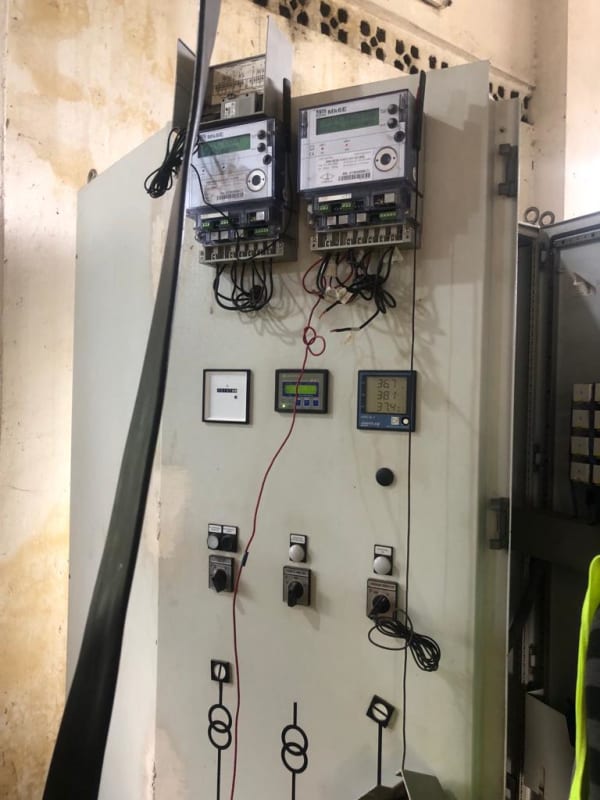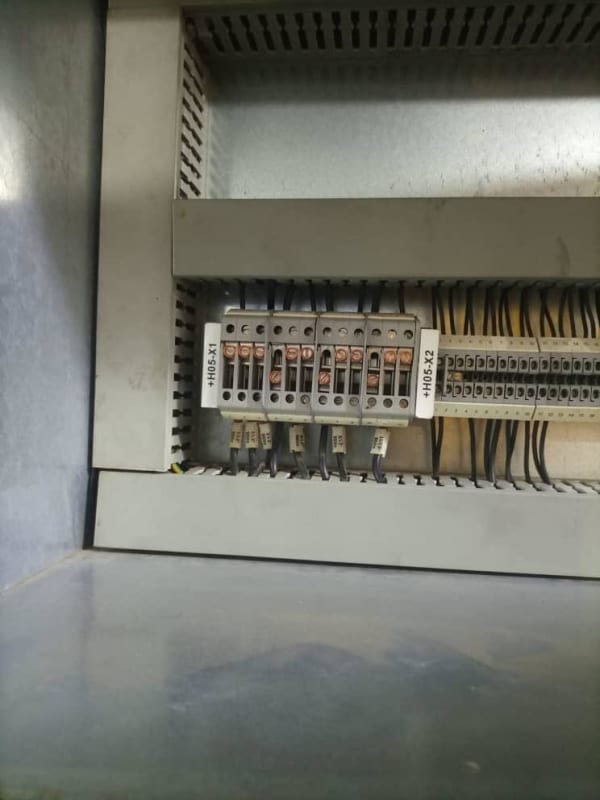It's been years and I can't find my Metering book.
Some schemes use line to line voltage, some use line to neutral voltage.
Some metering schemes make assumptions about voltages.
Assuming unity PF;
If the current is metered on line A and the voltage is measured line A to B,
the meter will respond to the A to B component of the current in line A.
This reduces the metered amount by a factor of 1/1.73 to give the same result as would have been obtained with a line to neutral voltage.
Voltage assumption #1, The household meter so common in North America;
The standard meter assumes that the line to neutral voltages are balanced.
In the case of a long supply line with badly unbalanced loads and a voltage drop/rise on the neutral, the meter reading will become inaccurate.
Voltage assumption #2, metering three phase with a two element meter.
One element is used to meter A phase, line to neutral.
The second element is used to meter C phase, line to neutral.
Each phase may be expressed as components of the other two phases,
So if the B phase conductor is passed through the A and C CTs, the A phase element will meter the A phase component of B phase and the C phase element will meter the A phase component of C phase.
This scheme will meter unbalanced line to neutral loads.
This scheme makes the assumption that the voltages are equal.
There is an alternative arrangement where three CTs are used and the CT secondaries are connected in delta.
I used this scheme to meter several large consumers.
BUT:
Anecdote alert:
On of the installations was on a reef, about 1000 Feet offshore, fed by a 3/C submarine cable at 13200 Volts.
One conductor failed and was replaced with a single conductor cable running alongside the original cable.
The conductors were no longer balanced as to inductive reactance and the load end voltages became badly unbalanced.
The meter readings became inaccurate and the two element meter was replaced with a three element meter.
And;
A cannery was selling shore power to ships tied up for the winter.
No refrigeration was running and three phase was not needed.
The supply was 208/120 Volts, but the plant was metering with a 120/240 Volt KWHr meter.
While each line to neutral load was at 120 Volts, the meter assumed that each side was receiving 208/2 = 104 Volts.
I recommended that they increase their billing by a factor of 240V/208V.
In conclusion, I may have misspoke.
When the current in a meter element is not in phase with the voltage in the same meter element, only the in-phase component will be metered.
But to agree with Mr. Che, the connections and the polaritys of the connections are very important.
When I first started using unfamiliar three phase metering connections, I have hidden a single phase meter connected line to neutral.
The readings correlated closely with 1/3 of the three phase metering. (Close enough)
The correlation did not have to be exact.
Any misconnection would result in errors grossly exceeding unbalanced load errors.
--------------------
Ohm's law
Not just a good idea;
It's the LAW!



![[mad] [mad] [mad]](/data/assets/smilies/mad.gif)